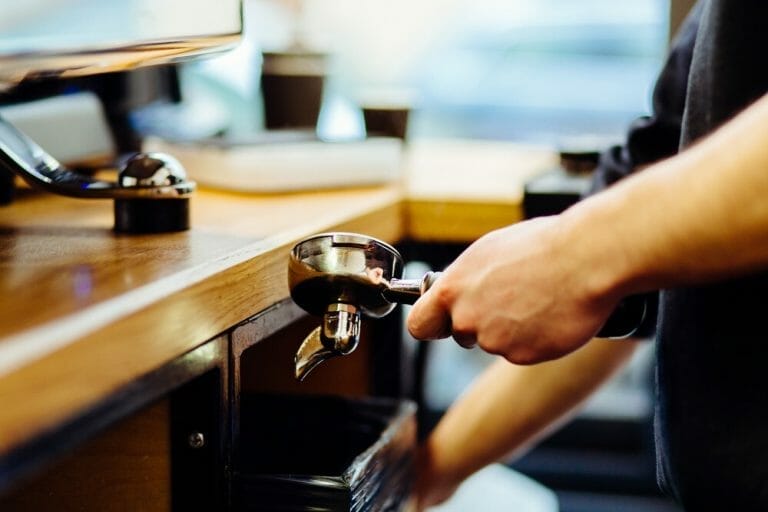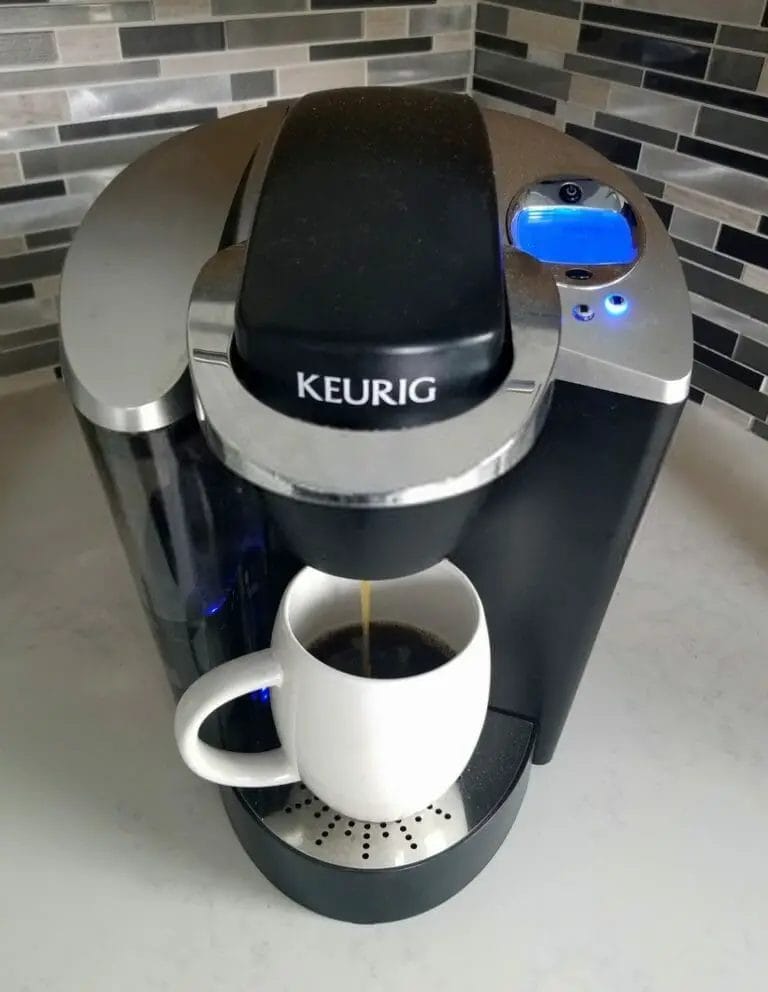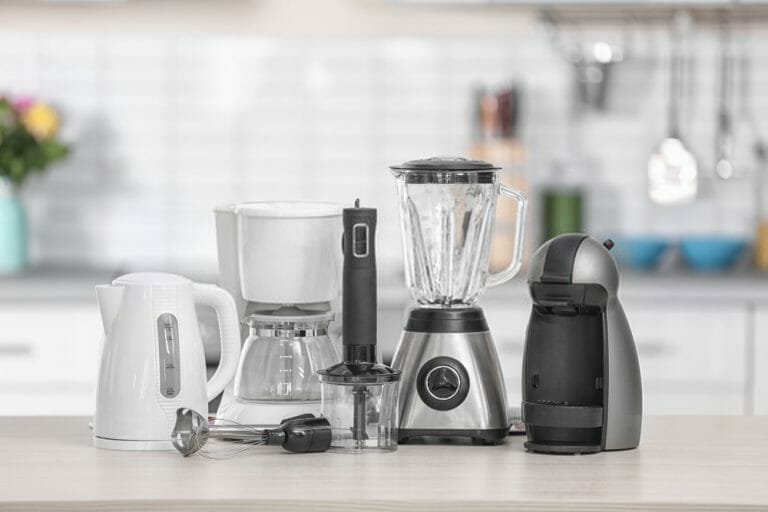How To Prevent Grounds In Your Coffee
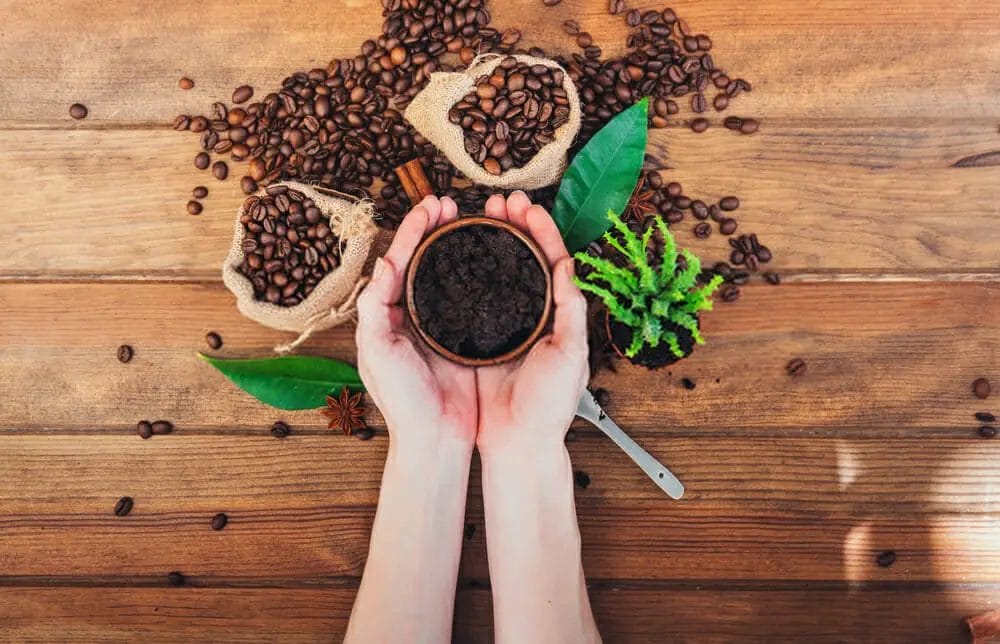
Are you tired of finding grounds in your coffee? It can be frustrating and ruin the taste of your morning cup. But fear not, there are ways to prevent this from happening!
In this article, we will go over various techniques you can use to ensure a smooth and delicious cup of coffee every time.
First, it’s important to understand how grounds end up in your coffee. This can happen due to improper grinding, inaccurate measuring, or even inadequate filtration.
By taking control of these factors, you can enjoy a clean and flavorful cup without any unwanted grittiness.
So let’s dive into some tips and tricks for preventing grounds in your coffee!
Key Takeaways
- Proper grinding, filtration, and pouring techniques are crucial to prevent grounds in coffee
- Adjusting the grind size can reduce sediment and improve taste, but coarser grinds are generally better for digestion and reducing sediment
- Using high-quality filters that fit properly, wetting them before use, and checking for gaps or tears can prevent grounds from slipping through
- Using fresh coffee beans, storing them properly, and experimenting with different brewing methods can all contribute to ensuring quality coffee without grounds.
Importance of preventing grounds in coffee
Preventing grounds in your coffee is crucial for a smooth, enjoyable morning brew that won’t leave you spitting out grit. Not only does it improve the taste and texture of your coffee, but it also prevents any unwanted health effects from ingesting too much caffeine or other compounds found in coffee grounds.
To ensure that you never have to deal with gritty or muddy coffee again, there are a few simple steps you can take. First, use an appropriate grind size for your brewing method – finer grinds for espresso and coarser grinds for French press. Second, invest in high-quality filters that fit properly and don’t allow any grounds to slip through.
Brief explanation of how grounds can end up in coffee
You may notice tiny particles in your morning cup, but these bits can easily make their way into your brew during preparation.
Grounds can end up in coffee due to several reasons. Firstly, if the grind size is too small, it can clog the filter and cause the water to overflow or flow too slowly, resulting in grounds sneaking into your cup.
Secondly, if the filter isn’t properly secured on top of the carafe or brewing device, grounds can seep through gaps and enter your coffee.
Thirdly, pouring water too quickly onto a dry bed of coffee grounds can cause them to rise and float on top of the water instead of sinking down where they belong.
Lastly, stirring the coffee with a spoon that has residual grounds on it can introduce them back into your drink even after filtering.
To prevent this from happening again, ensure that you use an appropriate grind size for your brewing method and double-check that filters are securely placed before adding water.
Additionally, pour water slowly onto a wet bed of coffee and avoid stirring with used spoons or utensils when serving.
Below are the different methods on preventing Grounds In Your Coffee
1. Adjusting the grind
If you want to reduce the amount of sediment in your coffee, one effective way is by adjusting the grind.
Using a coarser grind can help prevent fine particles from ending up in your cup, resulting in a smoother and cleaner taste.
On the other hand, using a finer grind may increase sediment levels and result in an overly bitter taste.
Consider experimenting with different grinds to find the right balance for your preferred brew.
Using a coarser grind
One way to avoid grounds in your coffee is by using a coarser grind, which won’t clog the filter as easily.
This means you can enjoy a full-bodied cup without worrying about bits of coffee ending up in your mouth.
When you use a coarser grind, the water can flow through the grinds more easily, allowing for proper extraction and preventing over-extraction.
This method improves the taste of your coffee and saves time and money. You won’t have to waste filters or clean up messy spills caused by clogged filters.
So next time you make yourself a cup of joe, try using a coarser grind. Experience the freedom of enjoying a perfect cup of coffee without any annoying grounds floating around.
Effects of finer grind on sediment
When using a finer grind for your coffee, expect to see more sediment in the bottom of your cup. This is because the smaller particles have more surface area and are able to extract more flavor from the beans.
However, this also means that there will be more particles left behind after brewing, which can result in a gritty texture and bitter taste. To prevent this, you can try using a paper filter or pour-over device to trap the sediment before it reaches your cup.
Another option is to adjust your brewing time or water temperature to reduce extraction without sacrificing flavor.
Ultimately, finding the right balance between grind size and brewing method is key to enjoying a smooth and satisfying cup of coffee without any unwanted grounds.
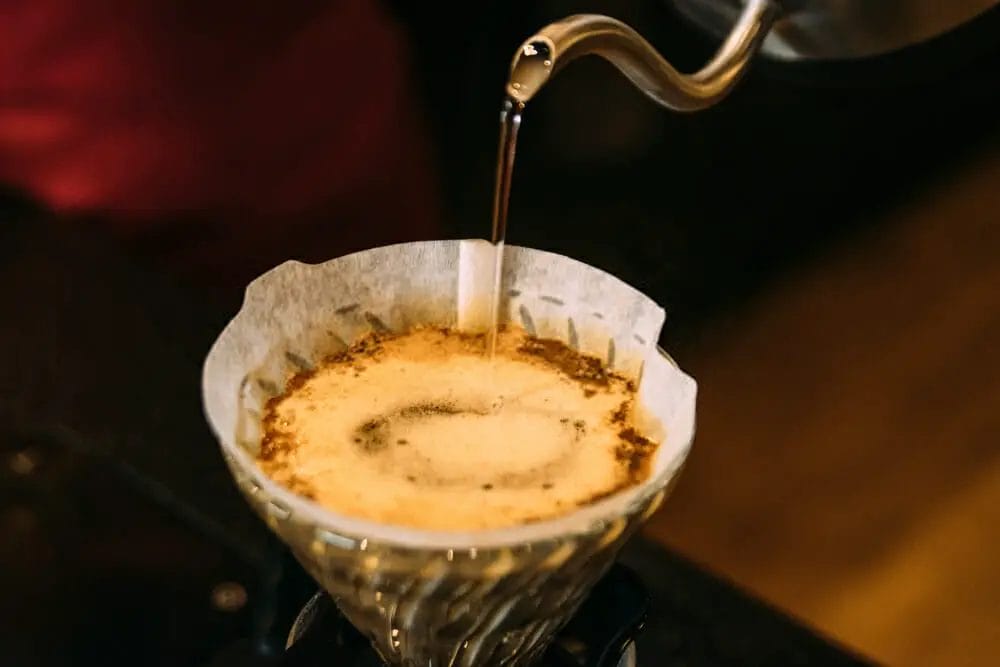
Benefits of using a coarser grind to reduce sediment
- Smoother and cleaner cup of coffee: Using a coarser grind reduces sediment, resulting in a smoother and cleaner coffee drinking experience.
- Reduced fine particles: Finer grinds create more surface area for water extraction but also produce more fine particles in the cup. Coarser grinds minimize the presence of these particles.
- Maintained flavor extraction: Despite using a coarser grind, you can still extract enough flavor from the coffee beans, ensuring a flavorful cup of coffee.
- Improved digestion: Consuming fewer tiny coffee ground particles by using a coarser grind can be easier on the digestive system.
- Less cleanup: With reduced sediment in the cup, there will be less residue to clean up after brewing, saving time and effort.
Switching to a coarser grind offers the benefits of a smoother, cleaner cup of coffee with retained flavor and easier digestion, while also reducing post-brewing cleanup.
2. Controlling coffee quantity
When brewing coffee, you must pay attention to the quantity of coffee used.
Using too much coffee can negatively impact the taste and texture of your brew, creating a bitter and overpowering flavor.
By reducing the amount of coffee used, you can also reduce the amount of sediment in your cup, resulting in a smoother and cleaner finish.
So, remember to measure your coffee carefully to achieve the perfect balance for your taste buds.
Impact of using too much coffee
Overindulging in coffee can lead to an unpleasant, gritty texture that ruins the overall taste of your brew.
To prevent this from happening, here are three things you should keep in mind:
- Stick to the recommended amount of coffee per cup, which is usually around 1-2 tablespoons per 6 ounces of water. Using more than this can result in a bitter and grainy taste.
- Avoid using finely ground coffee beans as they tend to release more sediment into your cup. Instead, opt for coarser grinds that allow for better filtration during brewing.
- Clean your equipment regularly to prevent buildup of oils and residue that can contribute to a gritty texture in your coffee.
3. Proper use of filters
To ensure that your coffee is free of grounds, it’s important to use filters correctly.
Start by wetting paper filters before adding coffee grounds. This helps prevent the filter from sticking to the grounds and allowing particles through.
Make sure the filters stick securely to the sides of the holder. This ensures water flows evenly through them and doesn’t bypass any areas.
Finally, check for any gaps or tears in the filter before brewing. These can let unwanted grounds slip through into your cup.
Wetting paper filters
By wetting your paper filter before adding grounds, you can ensure a smoother and cleaner cup of coffee.
This simple step can prevent unwanted flavors and particles from ending up in your brew.
To wet the filter, simply pour hot water over it and discard the water before adding your grounds.
Not only does this process remove any paper taste from the filter, but it also helps the filter stick to the brewing device.
Take a look at this table for an easy guide on how to wet your paper filters:
| Wetting Paper Filters | |
|---|---|
| Materials Needed | Coffee Filter, Hot Water |
| Step 1 | Place filter in brewer |
| Step 2 | Pour hot water over filter until saturated |
| Step 3 | Discard water |
| Step 4 | Add coffee grounds |
By following these steps, you can elevate your coffee brewing experience and enjoy a delicious cup free of unwanted grounds.
Plus, taking control of something as simple as this can provide a sense of freedom in your daily routine. So go ahead and give it a try!
Ensuring filters stick to the sides of the holder
Make sure your filter sticks to the sides of the holder for a hassle-free and satisfying brewing experience that’ll leave you feeling confident and empowered.
To achieve this, make sure that the filter is properly folded and creased at the bottom before placing it in the holder.
Gently press down on the edges of the filter to ensure it adheres to the sides of the holder.
This will prevent any grounds from slipping through gaps between the filter and holder, resulting in a cleaner cup of coffee.
Additionally, avoid overfilling your coffee grounds as this can cause them to spill over into your brew, leading to a gritty texture.
Preventing grounds from slipping through the filter
You can ensure a clean and smooth cup of coffee by carefully folding and creasing the filter at the bottom, pressing gently on its edges to guarantee it sticks to the sides of the holder.
But what about those pesky grounds that still slip through? The key is to use a finer grind of coffee beans, as larger grinds will easily pass through even the most tightly secured filters.
Additionally, avoid overfilling the filter with too much coffee, as this can cause pressure and force grounds through.
4. Techniques for specific brewing methods
When it comes to brewing your coffee, there are specific techniques that you should use for each method.
For instance, when making French press coffee, it’s best to avoid tamping and instead use gentle and even pressing. Additionally, allowing the coffee to sit after pressing can help the grounds settle at the bottom of the pot.
For autodrip makers, using a second filter can improve the overall quality of your brew.
And for those who pour aggressively, consider using a second strainer to prevent any rogue grounds from slipping through.
Avoiding tamping (except for espresso)
By skipping the tamping step, your coffee grounds can remain loose and prevent clogging in your brew.
Tamping is a technique often used in espresso brewing to ensure an even distribution of pressure on the grounds, but it can lead to over-extraction and bitter tasting coffee if not done properly.
Instead, try these three techniques for avoiding tamping:
- Use a coarser grind size to allow for easier water flow through the grounds.
- Gently tap or shake the portafilter before inserting it into the machine to settle the coffee without compacting it too much.
- Experiment with different levels of pressure when pulling shots to find what works best for your beans and machine.
By avoiding unnecessary tamping, you can have more control over your brew and enjoy a smoother, cleaner taste without feeling restricted by traditional methods.
Gentle and even pressing for French press
For a smoother and more enjoyable French press experience, it’s important to gently and evenly press down on the plunger.
This means applying consistent pressure throughout the process, rather than pushing down too hard or using a jerky motion.
By doing so, you can prevent grounds from escaping into your cup and ensure that every sip is as delicious as the last.
Additionally, remember to use a coarse grind when making coffee in a French press to avoid over-extraction and bitter flavors. With these tips in mind, you’ll be able to enjoy a perfect cup of French press coffee without any unwanted grit or bitterness.
So go ahead, take control of your brewing process and savor the freedom of a great cup of coffee.
Allowing coffee to sit to let grounds settle
Now that you know how to gently and evenly press your French press, the next step in preventing grounds in your coffee is allowing it to sit.
After pressing, let your coffee sit for a few minutes before pouring to allow the grounds to settle at the bottom of the carafe.
This simple yet effective technique will ensure a smooth and satisfying cup of coffee without any unwanted grittiness.
Take control of your coffee experience by implementing this easy tip and enjoy the freedom of savoring every sip without any distractions from pesky grounds.
Using a second strainer for aggressive pouring
Using a second strainer can help ensure a smoother cup of joe by catching any remaining sediment during aggressive pouring.
When you pour too aggressively, the grounds tend to escape from the filter and end up in your coffee cup.
To prevent this, simply place a fine mesh strainer over your mug or carafe and pour through it as well to catch any stray grounds.
This method requires an extra step but ensures that every sip is free from unwanted bits of coffee grounds.
By taking this small precaution, you can enjoy a more refined and satisfying coffee experience that gives you the freedom to savor every sip without worrying about grittiness or bitterness in your brew.
Adding a second filter for autodrip coffee makers
You can easily improve the taste of your autodrip coffee by adding a second filter.
Here’s how you can do it:
- First, make sure that your coffee maker has space for two filters.
- Place one filter in the basket as usual.
- Add an additional filter on top of the first one.
- Pour in your coffee grounds and brew as normal.
This method helps to prevent any fine grounds from passing through the first filter, resulting in a cleaner cup of coffee with less grittiness.
By taking this extra step, you’ll be able to enjoy a better tasting cup without sacrificing convenience or ease of use.
Addressing other factors
When it comes to addressing other factors that contribute to grounds in your coffee, there are a few things you need to keep in mind.
First and foremost is the impact of poor grind uniformity on sediment levels. Using a quality coffee grinder is crucial for achieving consistency in particle size, which can greatly reduce the amount of sediment in your cup.
Additionally, failed filters can also be a potential culprit when it comes to unwanted grounds – always make sure yours are properly functioning before starting your brew.
Poor grind uniformity and its impact on sediment
With inconsistent grind sizes, your coffee will inevitably have unwanted sediment floating around.
This is because when the grounds are not uniform, some particles will be too small and others too large for the brewing method you’re using.
The smaller particles will over-extract and become bitter while the larger ones under-extract and remain flavorless.
Both of these types of particles contribute to sediment in your cup.
To prevent this from happening, invest in a high-quality burr grinder that can produce consistent grind sizes every time.
This will ensure that all of the grounds are properly extracted during brewing, resulting in a clean and delicious cup of coffee without any unwanted debris.
Importance of using quality coffee grinders
Using a high-quality coffee grinder is crucial for achieving consistent and flavorful grounds, allowing you to fully enjoy the rich aroma and taste of freshly brewed coffee.
A good quality grinder will provide uniformity in grind size, ensuring that each particle is evenly extracted during brewing.
This results in a more balanced flavor profile and eliminates the risk of over-extraction or under-extraction.
Additionally, a high-quality grinder will have sharper blades or burrs that produce less heat during grinding, which can affect the flavor of your coffee by altering its chemical composition.
Investing in a quality grinder not only ensures better tasting coffee but also saves you money in the long run by avoiding wastage or having to buy pre-ground coffee that may not be fresh or suited to your preferred brewing method.
Failed filters as a potential cause of grounds
You may be frustrated to discover that failed filters can ruin your perfect cup of coffee.
These filters are designed to keep grounds out of your brew, but if they tear or fail in some way, it can lead to a gritty and unpleasant cup.
To prevent this from happening, always make sure you’re using high-quality filters that fit properly in your brewing device.
Additionally, be sure to check the condition of the filter before each use and replace it immediately if you notice any tears or holes.
Taking these simple steps will ensure that your coffee stays free of unwanted grounds and maintains its delicious flavor profile.
Additional tips
Using fresh coffee beans
Freshly roasted coffee beans are the key to avoiding grounds in your morning cup. When coffee beans sit around for too long, they become stale and lose their flavor. This can lead to more grounds ending up in your coffee because the beans are too brittle to grind properly.
To prevent this, make sure you’re buying fresh coffee beans and storing them properly in an airtight container away from light and moisture. By using fresh beans, you’ll not only avoid grounds in your coffee but also enjoy a richer, fuller flavor that will satisfy your desire for a delicious cup of joe.
Don’t settle for stale coffee � invest in fresh beans and elevate your morning routine!
Proper storage of coffee beans
When storing your coffee beans, make sure to keep them in an airtight container that is stored away from light and moisture, so that they can maintain their freshness and flavor for longer.
To further prevent grounds in your coffee, consider these tips:
- Store coffee beans at room temperature rather than in the fridge or freezer.
- Keep the container away from strong odors or spices as coffee can easily absorb unwanted flavors.
- Only buy what you need for a week or two to ensure you’re using fresh beans.
- Avoid buying pre-ground coffee as it’s more susceptible to losing its flavor quickly.
- Grind your own beans just before brewing to ensure maximum freshness and flavor.
By following these tips, you’ll be able to enjoy a delicious cup of coffee without any unwanted grounds.
FAQs
Conclusion
Congratulations on taking the first step towards ensuring a smooth and enjoyable coffee experience! By following the tips outlined in this article, you can prevent those pesky grounds from making their way into your cup of joe.
Remember, adjusting the grind, controlling coffee quantity, and using proper filters are key to achieving a clean brew.
For specific brewing methods such as French press or pour-over, there are techniques that can further minimize the likelihood of grounds getting through.
Whether it’s investing in high-quality equipment or simply being mindful of other factors such as water temperature and stirring technique, every little detail counts when it comes to achieving a perfect cup of coffee.
So next time you brew your morning pick-me-up, keep these tips in mind and enjoy a smooth and delicious cup without any unwanted grounds. Happy brewing!



